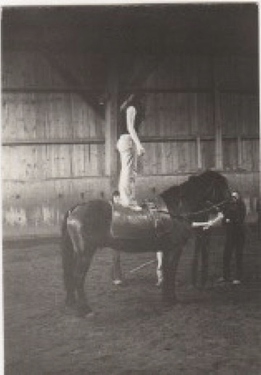If you read, probably, my first post above, it is not side reins that kill and maim horses, it is side reins used incorrectly that kill and maim horses.
It doesn’t matter if that person is a backyard ammie or a money earning professional. If they don’t know how to use them the horse is in danger.
You need to be taught to use side reins and you need to be taught by someone who uses them correctly.
The horse must never step backwards, ever. That leads to rearing and possibly going over and death.
The reins should never be used to pull in the head, or as others are saying in this thread to tie the head down, that is working front to back and in dressage we want to work horses back to front.
Use absolute minimal walk. Walking in side reins can cause a lateral walk.
My horses can stretch down in their solid side reins, they can also go inverted if they want to, because all horses in our paddocks suddenly startle at something, and I lose their focus. This has happened once but shows it is possible, so they are certainly not tied down.
The reins should always be put on loose, even on an experienced campaigner to get forward. You never know if something has happened to their mouth, that you have not picked up grooming and you want the horse thinking forward before you tighten to what length you want. Both those lengths are the length the horse needs, not the length of the reins you have. If they are too short do not use them.
The difference between stretching down and then coming through and working with a higher head carriage is because of the lunger. The reins don’t need to change length for that to happen.
The reins are attached higher as the horse progresses.
With a lot of people they get into trouble with tbs because they do not work their horse. If the horse is not being worked it is being made fit and creating muscles.
The day will come that the horse is too much for the rider. What the rider also does not know is that walk, trot and canter and going over jumps is not work.
You can learn to lunge at a higher level than you ride and to work the horse, even if you are not yet capable of that in the saddle.
This keeps the rider safer.
So in answer to the opening question.
Lunging correctly in side reins yea.
Lunging incorrectly in side reins nay.



